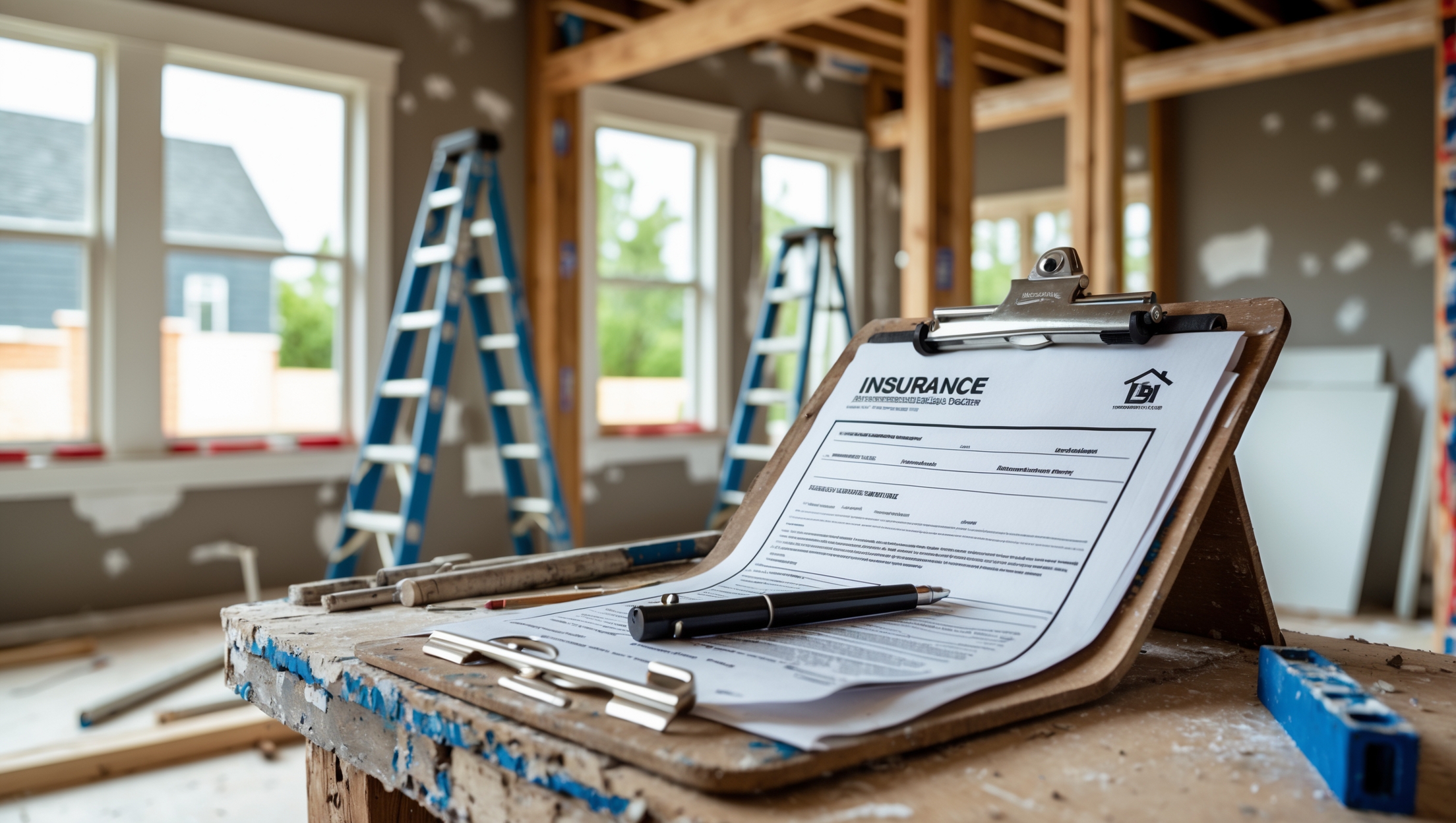Introduction: Permit Myths That Can Cost You More Than Money
It’s a scenario countless homeowners face: you’re eager to kick off that long-awaited kitchen remodel, finish your basement, or build a backyard deck. As you plan, you hear conflicting advice from friends, blogs, and even contractors about whether you need a permit. Some claim permits are only for major structural changes, others insist you can “fly under the radar” on small projects, and a few warn of horror stories about projects halted mid-stream by inspectors. The world of home improvement permits is shrouded in myths that can lead to costly mistakes, fines, project delays, and even forced teardowns. Misunderstanding what really requires approval can jeopardize your investment—and your peace of mind.
This comprehensive guide cuts through the confusion. We’ll debunk the most persistent myths about home improvement permits, explain why compliance matters (even for small jobs), and provide practical tools to help you determine permit requirements for your next upgrade. Whether you’re a DIY enthusiast or hiring contractors, understanding the truth about permits is critical to avoid setbacks and keep your projects on the right side of the law.
The Real Purpose of Home Improvement Permits
Why Permits Exist
Permits are not just bureaucratic red tape—they’re safeguards designed to ensure that work on your property meets safety, structural, and zoning standards. Municipalities use permits to:
- Protect residents and future occupants from hazards (fire, electrical, structural collapse).
- Ensure work complies with building codes and local ordinances.
- Maintain accurate property records (important for resale and insurance).
- Preserve neighborhood safety and aesthetics.
The Risks of Skipping Permits
Neglecting to obtain the required permits can have serious consequences, including:
- Stop-work orders and project delays.
- Costly fines or penalties.
- Difficulty securing insurance claims for damage.
- Problems when selling your home—unpermitted work often must be disclosed and can reduce your property’s value.
- Forced removal or reconstruction of non-compliant work.
Top Home Improvement Permit Myths—And the Truth Behind Them
Myth 1: “Permits Are Only Needed for Major Renovations”
The Truth: Many minor projects require permits, especially those affecting electrical, plumbing, or structural systems. For example, converting a closet into a powder room, replacing a water heater, or moving an interior wall almost always requires approval. Even seemingly small jobs can have significant safety implications.
Myth 2: “If I’m Doing the Work Myself, I Don’t Need a Permit”
The Truth: Permit requirements are based on the type of work, not who performs it. Whether you’re a seasoned DIYer or hiring a licensed contractor, proper approval is still mandatory in most municipalities for regulated work.
Myth 3: “Projects Hidden from the Street Don’t Need Permits”
The Truth: Visibility has nothing to do with compliance. Building inspectors, appraisers, and even neighbors can report unpermitted interior work. Basements, attics, and garages all fall under permitting jurisdiction if the work involves regulated systems or changes use.
Myth 4: “Painting, Flooring, and Cabinets Never Require Permits”
The Truth: While painting and flooring replacements usually don’t require permits, exceptions exist. For example, removing lead paint, asbestos tile, or working in historic districts may trigger special approvals. Cabinetry that involves moving plumbing, electrical, or load-bearing walls could also require a permit.
Myth 5: “I Can Get a Permit Retroactively If Needed”
The Truth: Some jurisdictions offer after-the-fact permits, but these are rarely simple or cheap. You may need to open walls or undo finished work for inspection, and non-compliant installations must be corrected. Retroactive permits often cost more and may not be granted if the work violates code.
Myth 6: “Permit Requirements Are the Same Everywhere”
The Truth: Building codes and permit policies vary widely between states, cities, and even neighborhoods. Always check with your local building department—never assume what was true in your last home applies to your current property.
Myth 7: “Decks and Sheds Under a Certain Size Don’t Need Permits”
The Truth: Many municipalities require permits for any permanent structure, regardless of size. Decks, sheds, and fences often have specific height, setback, and anchoring requirements. Failing to comply can result in forced removal, even if the structure is small.
Myth 8: “My Contractor Handles All the Permits”
The Truth: While reputable contractors often pull permits on your behalf, you are ultimately responsible as the property owner. Confirm that permits have been obtained before work begins, and keep copies for your records.
What Really Requires a Permit? Common Scenarios Explained
Permit requirements are local, but certain types of projects almost always need approval. Here’s a breakdown of common home improvement scenarios and their typical status:
- Structural Changes: Removing walls, adding rooms, or altering load-bearing elements always require permits.
- Electrical Work: New circuits, outlets, lighting, or panel upgrades need permits. Simple fixture swaps may not—check local policy.
- Plumbing Alterations: Moving pipes, adding bathrooms, or installing water heaters typically require permits. Replacing faucets or toilets usually does not.
- HVAC Installations: New furnaces, air conditioners, or ductwork need approval.
- Window and Door Changes: Enlarging openings, adding egress windows, or changing exterior doors generally requires a permit.
- Roof Replacement: Full roof replacements often need inspection and approval, especially if structural work is involved.
- Decks, Porches, and Sheds: Any permanent structure or one above a certain height or size usually requires permitting.
- Fences: Height, location, and design are regulated in many cities—permits are often required.
- Demolition: Removing walls, floors, or structures requires approval to ensure safety and proper waste disposal.
Always verify with your local building department before starting any project, as exceptions and additions may apply based on your area’s codes.
How to Determine If Your Project Needs a Permit
Step 1: Consult Your Local Building Department
Find your city or county’s building department website or call their office. Most offer checklists or searchable lists of permit-required activities. Some even have online permit portals for easy research.
Step 2: Describe Your Project in Detail
Be specific about your plans when inquiring. For example, “installing a 10×12 shed on a concrete slab with electrical wiring” provides more clarity than “building a shed.” This helps staff give you accurate guidance.
Step 3: Review Special Considerations
- Historic Districts: Even cosmetic changes may need approval to preserve the character of the neighborhood.
- HOA Rules: Homeowners associations often have additional requirements beyond municipal permits.
- Environmental Regulations: Projects near wetlands, flood zones, or protected trees may trigger special permits.
Step 4: Document Everything
Keep copies of permit applications, approvals, inspection reports, and correspondence. This documentation is invaluable for resale, insurance, and potential disputes.
Permit Application Tips: Avoiding Delays and Denials
- Submit Complete Plans: Provide clear drawings, specifications, and materials lists as required.
- Know the Timeline: Permits can take days to weeks for review. Factor this into your project schedule.
- Schedule Required Inspections: Most permits require one or more inspections at key project stages. Failing to schedule inspections can void your permit.
- Hire Licensed Professionals When Required: Electrical, plumbing, and HVAC work often must be performed by licensed contractors.
- Be Honest About DIY: Some municipalities allow homeowners to perform certain work, others do not. Misrepresenting who will perform the work can result in a denied permit or fines.
Case Spotlights: Costly Permit Mistakes and How to Avoid Them
Case 1: The Basement Apartment That Wasn’t
A homeowner finished a basement to create a rental unit, skipping permits to save time and money. When neighbors complained about increased traffic, the city investigated. The project violated egress window and ceiling height codes. The owner faced $15,000 in fines and had to tear out finished walls to install code-compliant windows—doubling the project’s original cost.
Case 2: The Unpermitted Deck Dilemma
A family built a backyard deck without checking local regulations. When they listed their home, the buyer’s inspector flagged the deck as unpermitted. The lender required proof of permits and code compliance before approving the sale. The sellers spent $3,000 to retroactively permit, reinforce, and inspect the deck—delaying closing by two months.
Case 3: Kitchen Remodel Insurance Nightmare
After a kitchen remodel, a fire caused by faulty wiring destroyed part of the home. The insurance company refused to cover damages, citing unpermitted, uninspected electrical work. The homeowners were left to pay out-of-pocket for repairs and legal fees.
Maintaining Compliance: Best Practices for Every Homeowner
- Start With Research: Always check local codes before you plan or purchase materials.
- Get Written Confirmation: When in doubt, request written verification from your building department regarding permit requirements.
- Work With Reputable Pros: Choose contractors who understand and follow local permitting rules. Ask for proof of permits before work begins.
- Don’t Skip Inspections: Inspections are the final check on safety and code compliance. Schedule them promptly and correct any issues noted by inspectors.
- Keep Permits On File: Store all paperwork safely—you’ll need it if you sell, refinance, or file an insurance claim.
Conclusion: Why Permit Knowledge is Your Best Home Improvement Tool
Home improvement success isn’t just about great design, quality materials, or skilled labor. It’s also about working within the rules that keep you, your family, and future buyers safe. Permit myths persist because building codes are complex and ever-changing, but ignorance isn’t a shield from consequences. Unpermitted work can lead to much more than a slap on the wrist: you might face steep fines, forced demolition, reduced property value, or denied insurance claims. Even if you “get away with it” for now, the truth often emerges at the worst time—during a sale, refinance, or after damage has occurred.
The smartest homeowners and renovators treat permits as an essential part of the process, not a hurdle to dodge. By understanding what really requires approval, asking the right questions, and keeping thorough records, you’ll protect your investment, avoid stress, and ensure your improvements are safe and legal for years to come. When in doubt, always check with your local building department—the time you spend up front could save you thousands down the road.
Ready to start your next project? Make permit research your first tool out of the box. It’s the foundation for improvements you can be truly proud of—and confident in.




